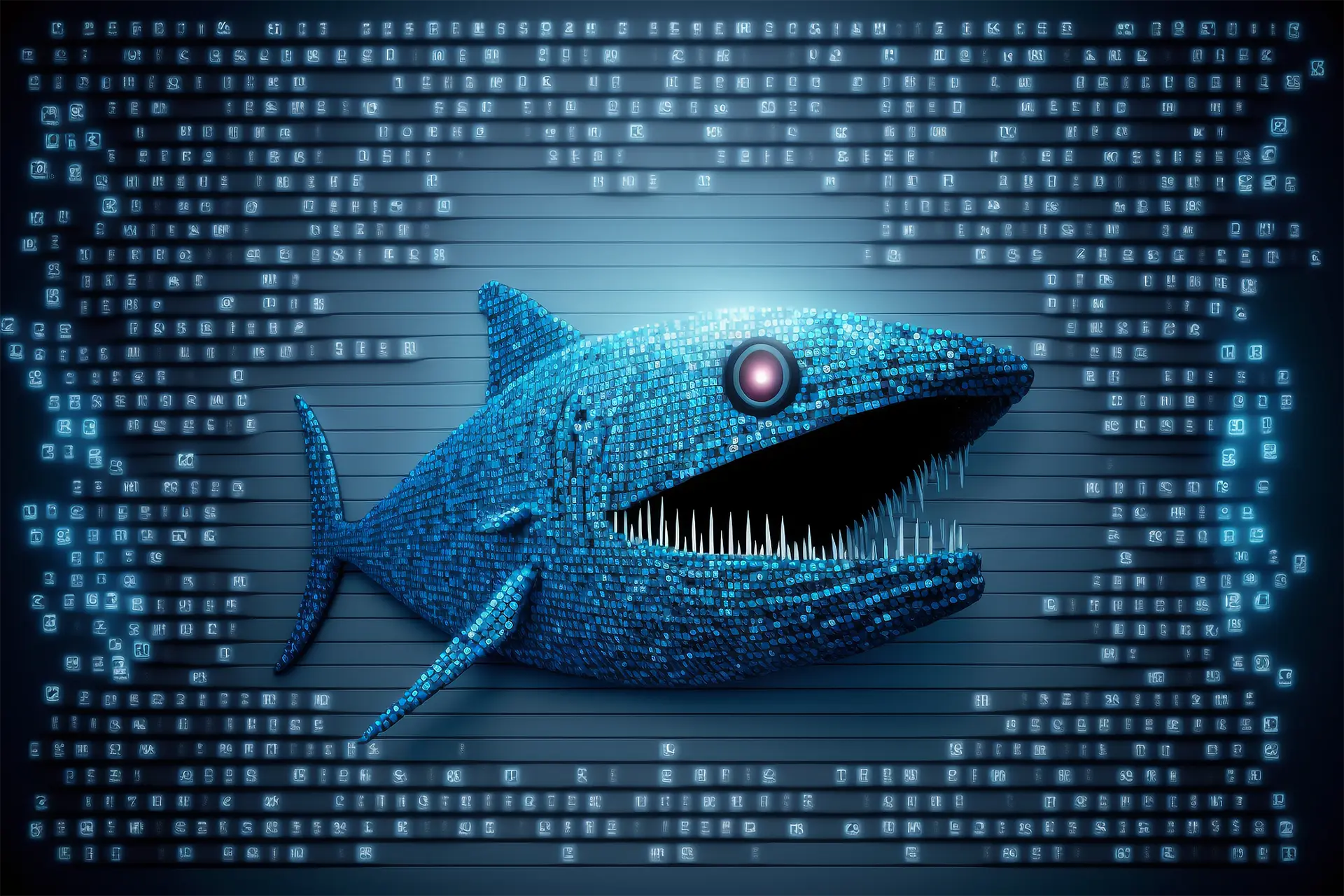Table of contents
- What is whaling?
- Difference between whaling and spear phishing
- Techniques used in whaling
- How to protect yourself from whaling attacks
- The role of urgency in whaling attacks
- Famous whaling attack examples
- Prevention and the future of whaling
The phenomenon of whaling, also known as phishing whaling, represents one of the most insidious threats among modern cyber-attacks. This type of attack, which falls under the category of phishing attacks, is distinguished by its specific target: the “big fish”.
Unlike traditional phishing, which indiscriminately targets a large number of people, whaling focuses on high-profile individuals within an organization, such as executives, CEOs, and other corporate leaders.
What is whaling?
Whaling is an advanced form of phishing that uses social engineering techniques to deceive targets, tricking them into disclosing sensitive information or taking harmful actions. The cybercriminals who orchestrate these attacks create seemingly legitimate emails, often personalized and tailored specifically for the victim.
These emails may appear to come from trusted sources, such as colleagues, business partners, or even government entities.
Difference between whaling and spear phishing
The difference between a whaling phishing attack and spear phishing lies mainly in the target. While spear phishing can target anyone within an organization, whaling exclusively focuses on executives and high-profile figures — the “big fish.”
However, both types of attacks share the goal of deceiving the victim through fraudulent communications, often via email, that demand access to sensitive data or financial transactions.
Techniques used in whaling
Whaling attacks are sophisticated and require meticulous planning. Cybercriminals may spend weeks or months gathering personal information about their target via social media, the company’s website, and other public sources.
Once this information is obtained, they craft highly convincing emails, complete with corporate logos and industry-specific language. These whaling emails may request the victim to download a malicious attachment, click on a fraudulent link, or provide login credentials for company systems.
How to protect yourself from whaling attacks
Protecting against whaling requires a combination of cybersecurity training and advanced technological tools. It is essential that employees, particularly those in senior positions, are aware of the dangers posed by this type of attack and can recognize suspicious emails.
Additionally, implementing cybersecurity solutions such as anti-phishing filters and two-factor authentication can help reduce the risk of a whaling phishing attack.

The role of urgency in whaling attacks
One of the key elements that makes whaling attacks particularly effective is the use of urgency. Cybercriminals exploit this psychological tactic to prompt their victims to make quick and often irrational decisions, increasing the likelihood of a successful attack.
Psychological pressure
Urgency is used to create a context in which the victim feels compelled to react immediately. This psychological pressure can be very powerful, especially in corporate environments where executives are accustomed to making quick decisions and responding promptly to critical situations.
Attackers may exploit this habit by sending communications that appear urgent and require immediate action, such as a fund transfer or the sharing of sensitive information and personal data.
Examples of urgent scenarios
Whaling attacks often include scenarios that create a sense of urgency. Common examples include:
- Urgent bank transfer requests
Attackers may send emails that appear to come from the CEO or CFO of the company, requesting an immediate transfer of funds for a critical transaction or investment opportunity that cannot be missed. - Security updates
Emails may warn of an alleged security breach that requires immediate updating of login credentials or verification of personal information. - Regulatory demands
Attackers may impersonate government or regulatory agencies, claiming via email that the company must immediately comply with new regulations or risk severe penalties.
The effect of urgency on risk perception
When urgency is perceived, people tend to focus on the immediate problem to solve, overlooking signs that might indicate fraud. This effect is amplified for executives and corporate leaders who often manage multiple responsibilities simultaneously.
Attackers exploit this vulnerability by sending communications that require immediate attention, reducing the time available for the victim to reflect and critically evaluate the legitimacy of the request.
Social engineering techniques
Urgency is just one of many social engineering techniques used in whaling phishing attacks. Combined with other elements such as persuasive language and identity spoofing, urgency can make fraudulent emails extremely convincing. Attackers often include specific and personal details in their communications to increase credibility and the sense of authenticity.
Famous whaling attack examples
In recent years, numerous whaling attacks have targeted high-profile companies, resulting in significant financial losses and reputational damage.
Example:
An attack on the aerospace company FACC where cybercriminals deceived the CEO and CFO, successfully stealing millions of dollars through fraudulent wire transfers.
Example:
Another case is that of Mattel, where a whaling attack led to the transfer of $3 million to a Chinese bank account, which was fortunately recovered thanks to timely intervention.
Prevention and the future of whaling
Preventing whaling attacks requires ongoing commitment and a robust cybersecurity strategy.
Companies must invest in continuous employee training, keep their security systems up-to-date, and adopt preventive measures such as verifying financial requests through separate channels. Additionally, collaboration between government entities, businesses, and security service providers can help develop innovative solutions to counter this type of threat.
In summary, whaling represents one of the most dangerous forms of cyber-attack aimed at corporate leaders and high-profile figures. Awareness of the risks associated with this type of attack and the adoption of appropriate preventive measures are essential to protect organizations from financial losses and reputational damage.
FAQ
- What is whaling?
Whaling is a form of phishing that targets high-profile figures such as corporate executives using social engineering techniques to deceive them. - What is the difference between whaling and Spear Phishing?
The main difference is the target: whaling targets only executives and high-profile figures, while Spear Phishing can target any individual. - How to recognize whaling emails?
Whaling emails often appear to come from reliable sources and contain urgent or unusual requests. - What are the goals of a whaling attack?
The goals include gaining access to sensitive data, transferring funds, and compromising corporate security. - How to protect against whaling attacks?
It is important to train employees in cybersecurity, use anti-phishing filters, and implement two-factor authentication. - What techniques do criminals use in whaling?
They use social engineering techniques, gathering personal information about the victim and creating personalized and convincing emails. - What to do if you receive a suspicious email?
Do not reply, do not click on links or attachments, and immediately report the email to the company’s IT department. - What are the effects of a successful whaling attack?
The effects can include significant financial losses, theft of sensitive data, and damage to the company’s reputation. - How to prevent whaling attacks?
Invest in continuous training, keep security systems up-to-date, and verify financial requests through separate channels. - Why are executives targeted in whaling?
Executives have access to valuable information and resources, making them high-value targets for cybercriminals.

